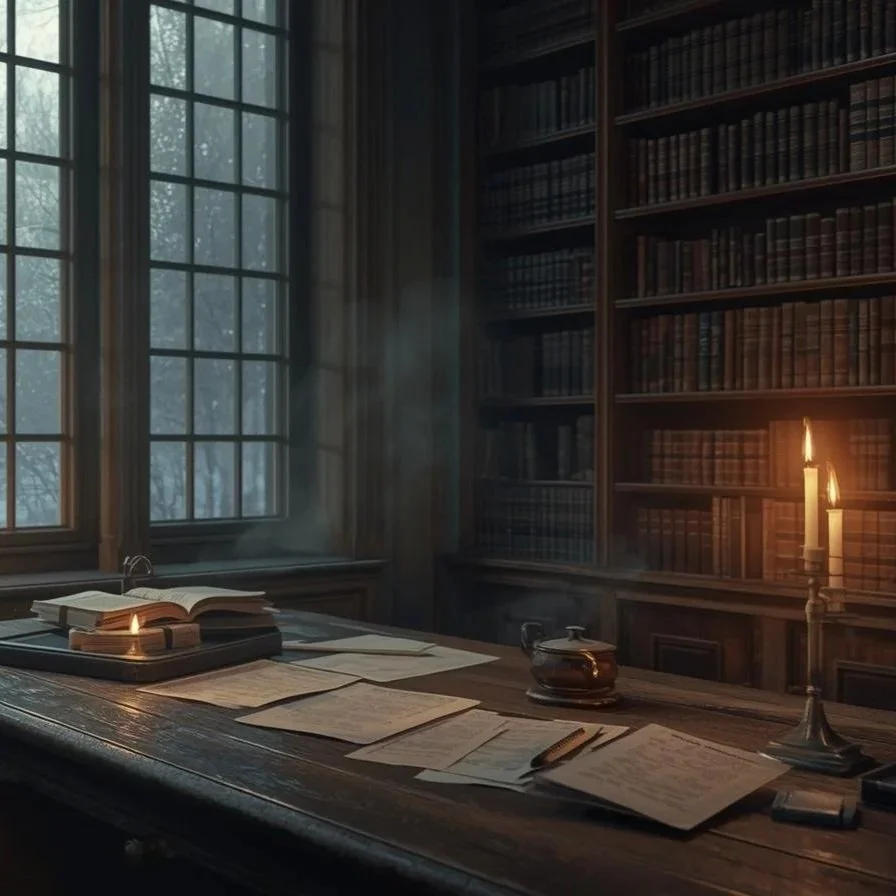Notes from the Inkpot
Writing, teaching, creating - one ink-stained idea at a time.

20 Great Texts to Teach at Christmas (or during Winter)
Looking for meaningful texts to teach in December? These 20 Christmas and winter-themed classics — from short stories and poems to films and podcasts — offer rich discussion, creative writing opportunities, and seasonal engagement without sacrificing academic depth.

The Real Point of A Christmas Carol (And Why We’re Still Missing It)
We often teach A Christmas Carol as a cosy festive tale about kindness and personal change, but Dickens wrote it as a powerful demand for social reform. This post explores what we might be missing when we reduce the novella to seasonal sentiment, and why its true message—collective responsibility and systemic transformation—matters more than ever in today’s classrooms.

The Hemlock Collection: A Witch Trial Mystery Across Centuries
Step into Crowhurst, 1628. A child’s screams in the night, whispered accusations, and a village consumed by fear. The Hemlock Collection is a digital-first creative writing mystery that blends witch trials and folklore with the modern-day disappearance of Beth Crowhurst in 2023. Through letters, grave rubbings, diary entries, and newspaper clippings, students and writers are invited to investigate both timelines and craft their own stories from the shadows left by history.

10 Books by Young Authors That Show Students Their Voices Matter
Many students believe they’re “too young” to write something meaningful. Yet history proves otherwise. From Anne Frank’s diary to Mary Shelley’s Frankenstein and Malala Yousafzai’s memoir, young authors have created works that changed literature, history, and even global movements. This post explores ten powerful books written by teenagers and young writers, showing how their voices can inspire students to write with confidence today.

Halloween Gothic Short Stories & Creative Writing Bundle: Teach Analysis and Imagination in One Go
Looking for ready-to-go Halloween ELA activities? This Gothic short story and creative writing bundle is perfect for middle and high school lesson plans. Explore The Tell-Tale Heart, The Fall of the House of Usher, and The Monkey’s Paw with complete activities, then let students create their own eerie narratives through the Victoriana Creative Writing Mystery Box. A time-saving, engaging way to combine analysis and imagination this October.

10 Best Edgar Allan Poe Stories to Teach (And How to Teach Them)
Spooky season is the perfect time to teach Edgar Allan Poe. From The Tell-Tale Heart to The Masque of the Red Death, his stories and poems hook students with Gothic atmosphere, unreliable narrators, and detective intrigue. This list highlights the 10 best Poe texts to teach — with ready-to-use resources, activities, and creative ideas to bring them alive in your classroom.

Why I Swear by Picture Prompts for Teaching Literature (And How to Use Them)
Picture prompts aren’t just for creative writing units — they can transform the way students connect with literature. Whether you use them to spark predictions before reading or to inspire a fresh take after finishing a text, the right image can flip the switch from passive reader to active thinker. Here’s how I use picture prompts to teach language through literature, keep lessons fresh, and make analysis feel less like a chore.

How to Teach All Summer in a Day (Including Discussion Ideas & Creative Writing Activities)
Explore how to teach Ray Bradbury’s “All Summer in a Day” with meaningful discussions, tension-mapping, and creative writing tasks. This post shares classroom ideas, writing prompts, and ready-to-use resources to help students connect deeply with Margot’s story of isolation, empathy, and missed sunlight.

Why Macbeth Is the Only Shakespeare Play I’ll Never Get Sick Of
I’ve taught Macbeth more times than I can count, and somehow, I still look forward to it. There’s just something about the witches, the guilt, the madness. In this post, I’m sharing why Macbeth is the one Shakespeare play I’ll never get sick of—plus some of my favourite creative writing tasks and classroom stories along the way.

How to Teach English Language Skills Using Literature Texts (Free Prompts Included)
Combine language and literature in a meaningful way with chapter-by-chapter creative writing prompts. This post explores how you can build writing skills while deepening students’ understanding of the texts you teach - plus, you’ll find lots of free resources to download and try right away.